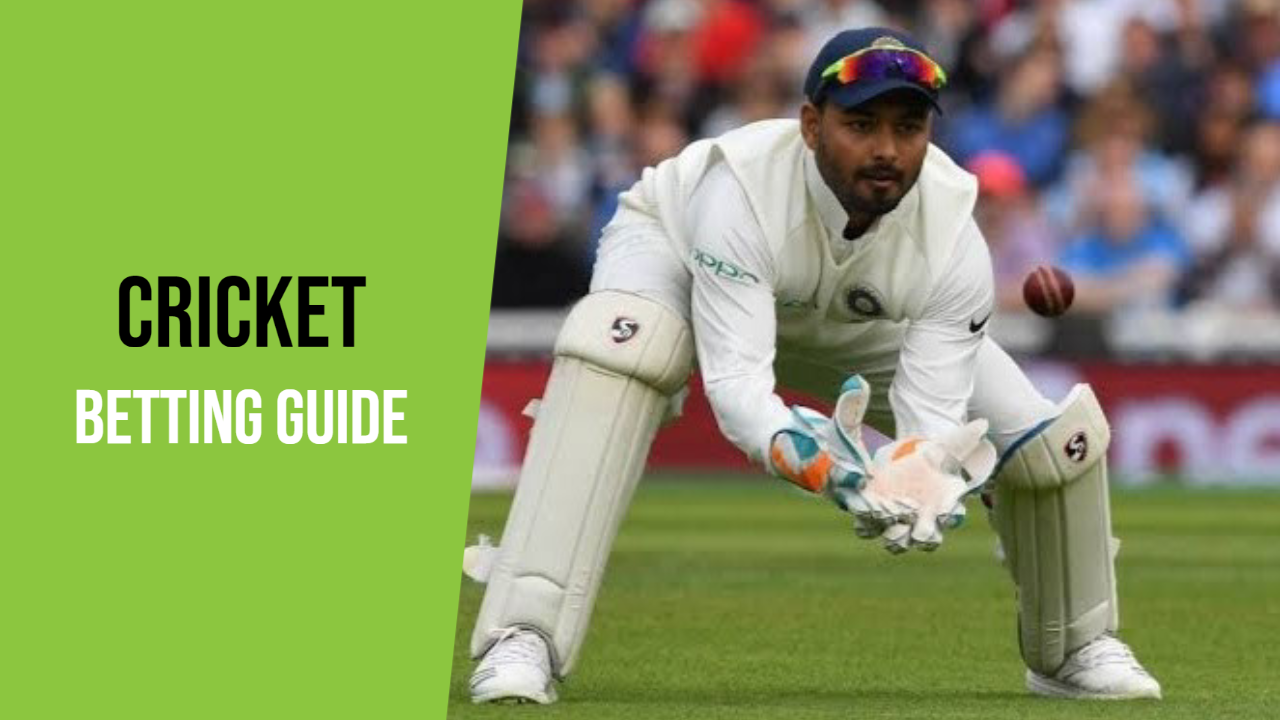
This cricket betting guide explains the key factors that influence matches across different formats, from pitch and weather conditions to team tactics. You’ll also find helpful tools and resources to support informed betting — whether you’re following Test matches, T20 leagues, or international competitions.
About Cricket Betting
Cricket betting involves placing stakes on the outcome of matches or specific in-game events. You can bet on team wins, top individual performances, or match stats like total runs and wickets.
The sport has a huge global following, particularly in India, Australia, the UK, Pakistan, and South Africa. Its rich history, varied formats, and data-driven nature make it a strong candidate for bettors who enjoy strategy and statistical depth.
Why Bet on Cricket?
-
Strategic Complexity
Cricket matches are influenced by dozens of variables — including pitch type, weather, and player roles — giving well-informed bettors an edge.
-
Range of Markets
Cricket offers diverse betting opportunities: match winner, method of dismissal, player stats, live ball-by-ball markets, and more.
-
Year-Round Action
From Test series and ODIs to global T20 leagues, cricket is played nearly every week of the year.
-
Global Passion
With some of the most passionate sports fans on earth, cricket betting remains popular and deeply engaging — especially during major international tournaments.
Popular Cricket Competitions
Cricket is played in multiple formats — Test, One Day Internationals (ODIs), and Twenty20 (T20) — across leagues and tournaments worldwide. Key competitions include:
International Tournaments
- ICC Cricket World Cup – The premier 50-over tournament held every four years.
- ICC T20 World Cup – Fast-paced global T20 competition, held biennially.
- ICC Champions Trophy – A high-level ODI tournament for the top-ranked nations.
- The Ashes – Historic five-Test series between England and Australia.
- Border-Gavaskar Trophy – Fiercely contested Test series between India and Australia.
T20 Leagues
- Indian Premier League (IPL) – The most commercially successful T20 league globally.
- Big Bash League (BBL) – Australia’s top T20 competition.
- Pakistan Super League (PSL) – Fast-growing T20 league featuring top domestic and international talent.
- Caribbean Premier League (CPL) – Known for entertaining cricket and vibrant fan culture.
Domestic Competitions
- County Championship (England & Wales) – England’s first-class competition.
- Ranji Trophy (India) – India’s top domestic red-ball competition.
Best Bookmakers for Cricket Betting
For competitive odds, in-play features, and market variety, the following bookmakers are strong options for cricket betting:
#ad. 18+, GambleAware.org, T&Cs Apply
#ad. 18+, GambleAware.org, T&Cs Apply
#ad. 18+, GambleAware.org, T&Cs Apply
#ad. 18+, GambleAware.org, T&Cs Apply
#ad. 18+, GambleAware.org, T&Cs Apply
#ad. 18+, GambleAware.org, T&Cs Apply
#ad. 18+, GambleAware.org, T&Cs Apply
#ad. 18+, GambleAware.org, T&Cs Apply
Considerations for Cricket Betting
Cricket is unlike most sports due to its variable formats, long durations, and layered tactical decisions. Here’s what influences outcomes — and by extension, betting value.
Weather Conditions
Weather often dictates match flow and strategy — especially in longer formats.
- Rain – May reduce overs or lead to abandonments (e.g. via the Duckworth-Lewis-Stern method).
- Overcast skies – Aid swing bowling, especially in Test and ODI formats.
- Humidity – Affects bowlers’ grip and stamina.
- Extreme heat – Accelerates player fatigue and can dry out pitches, favouring spin.
- Wind – Alters bowling angles and flight path.
- Damp surfaces – Slow the ball and reduce bounce, often aiding spinners.
Pitch & Ground Conditions
Each pitch behaves differently — and grounds vary significantly in size and speed.
- Green top – Offers bounce and seam; helps fast bowlers.
- Flat track – Low bounce and little movement; suits batsmen.
- Turning track – Offers grip and turn; favours spinners.
- Rank turner – Excessively spins; very hard for batters.
- Ground size – Shorter boundaries = more sixes.
- Outfield – Fast = more boundaries; slow = fewer scoring shots.
- Altitude – At higher altitudes, the ball travels further.
Tip: Study past matches at the same venue for clues about pitch and scoring trends.
Player Form
Recent performance indicators matter — for both individuals and teams.
- Batting form – Recent 50s/100s, strike rate, and shot selection discipline.
- Bowling form – Economy rate, wickets taken, consistency in line and length.
- Team balance – Whether the playing XI is suited to conditions.
- Key players – Impact players can swing matches even if others underperform.
Strategy & Tactics
Cricket strategy depends heavily on the format and can shift throughout the match. Key strategic areas include:
- Batting order manipulation – Promoting aggressive players in T20s
- Bowler rotation – To exploit matchups or pitch wear
- Field placements – Defensive vs attacking, especially late in innings
- Match-ups – E.g. spinner vs left-handed batter
- Use of DRS – Strategic use of reviews can influence crucial moments
Teams with adaptable captains often outperform expectations.
Opposition Analysis
Understanding the strengths and weaknesses of the opposing team is crucial. Look at:
- Bowling attack style – Pace-heavy, spin-heavy, or balanced?
- Fielding ability – Influences run-out chances and dropped catches
- Batting depth – Teams with strong lower orders can recover better
- Momentum – A team coming off recent wins often starts strong
- Venue control – Home teams may prepare pitches to suit their style
Toss Result
Winning the toss allows the captain to choose whether to bat or field first — often with a large strategic advantage.
- Day/night games – Teams may prefer to chase under lights
- Spin or swing forecast – May lead to fielding first on helpful pitches
- Weather risk – Can affect DLS outcomes and lead to target-chasing preferences
The toss is particularly influential in subcontinental T20s and Tests where conditions deteriorate over time.
Umpiring & Reviews
While DRS (Decision Review System) has improved accuracy, umpiring still influences matches.
- Key decisions – LBWs, caught behinds, and close run-outs can swing momentum
- DRS strategy – Poor use of reviews can cost teams their ability to overturn future errors
- Pressure situations – Marginal calls in close finishes can impact betting markets
Popular Cricket Betting Markets
Cricket offers both traditional and innovative betting options. Common markets include:
- Match winner – Predict the outright winner
- Series winner – Which team will win a multi-match series
- Top batsman/bowler – Best individual performers in a match or series
- Total runs/wickets – Over/under lines on team or player totals
- First innings lead – Test cricket only
- Man of the Match – Most influential player
- Total sixes/fours – Matchwide boundary totals
- Method of dismissal – Caught, bowled, LBW, etc.
- Live/In-play markets – Bet on next ball, next wicket, runs in over, and more
Best Sites for Cricket Stats
The below websites provide comprehensive and valuable cricket statistics:
Learn more: Best Sites For Free Cricket Statistics
Cricket FAQ
Cricket is a bat-and-ball game played between two teams of 11 players. The objective of the game is for one team to score more runs than the other by hitting a ball with a bat and running around the 22-yard pitch.
A wicket refers to a batsman being dismissed — either bowled, caught, or otherwise out. It’s a core concept in cricket and features in many betting markets, including:
- Next player dismissed
- Total wickets in a match or innings
- Method of dismissal
- Top wicket-taker
There are three main formats:
- Test Matches – Played over five days with two innings per side and no limit on overs.
- One Day Internationals (ODIs) – Each team bats for up to 50 overs.
- T20s (Twenty20) – Fast-paced format with 20 overs per side.
Each format requires different tactics and favours different betting markets. For example, T20s suit in-play betting, while Test matches may offer value on first innings totals or draws.
In ODIs and T20s, the team with the most runs wins. In Test matches, a game can end in a win, draw, or tie depending on how many wickets fall and how long the match lasts. Weather interruptions and pitch deterioration can also influence the result — especially in Tests.
The toss determines whether a team bats or fields first. This can affect:
- How well the pitch plays
- Exposure to changing weather
- Match strategy (e.g. chasing vs defending)
Some venues show clear trends that favour either side depending on the toss outcome.
Cricket is one of the most variable sports to bet on. Key factors include:
Pitch conditions
- Weather
- Toss result
- Match format
- Player matchups
- Team strategies
These can all influence the outcome, meaning research is crucial for successful betting.
Cricket betting shouldn’t be viewed as a reliable way to make money. Most casual bettors lose in the long run. However, you can improve your chances by:
- Focusing on value bets
- Using cricket stats and form guides
- Following trusted tipsters
- Understanding pitch/weather impact on games
- Unibet Review | Is The Bookmaker’s Hype Justified? [2025] - July 4, 2025
- QuinnBet Review | Is It A Safe Bookmaker? [2025] - July 4, 2025
- Hong Kong Odds | What Are HK Odds? How Do They Work? - July 4, 2025








